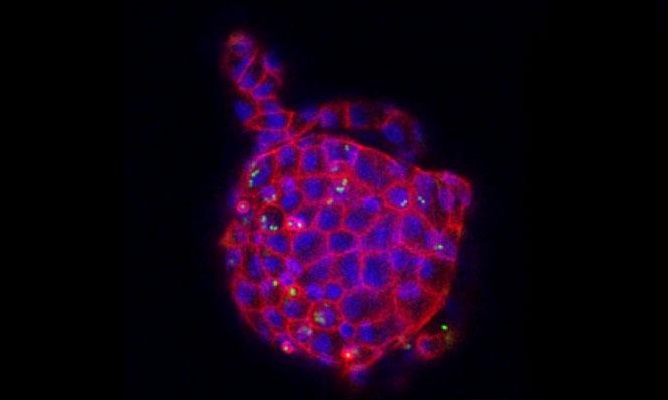
Scientists have developed three-dimensional tissue cultures mimicking the chicken gut to study poultry health and disease such as Salmonella and bird flu.
UK researchers created the inside-out miniature intestines, also known as enteroids, grown from stem cells, for researching gut biology in poultry.
The development of the 3D models will further support research into common infections and chicken immunity, scientists at the Roslin Institute say.
They will also support researchers to better understand the immune response to disease in chickens.
They may also support the testing of feed additives, vaccines and drugs targeted at the chicken gut and determine gut health in chicken breeds through work with industrial partners.
Scientists created the mini-guts with the internal gut surface on their exterior. This accessible surface enables researchers to easily expose the tissue to disease-causing organisms and feed additives, and then to monitor the effects.
The enteroids are the first mini-gut models to naturally include cells from the immune system, enabling a more comprehensive understanding of the chicken’s response to infection.
Tessa Nash, of the Roslin Institute, said studies into the gastrointestinal systems of birds had long been hampered by a lack of cell culture tools.
"With the development of these novel mini-guts we can now study diseases that are of importance to the poultry industry, including zoonotic infections," she said.
Professor Lonneke Vervelde, of the Roslin Institute added: "Inside-out organoids will support studies to develop our understanding of how gut tissue in chickens responds to disease, feed additives, nutrition and heat stress, saving time and reducing the number of animals needed for this process."
The study was carried out with funding from the BBSRC and published in Communications Biology.
